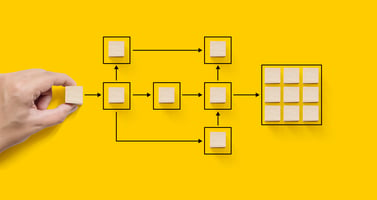Workforce planning is an emerging and highly sought after skill in the HR sector. Workforce...
Is workforce planning the same as HR planning?
If you've ever had to plan for your workforce, you know how difficult it can be. HR professionals are always looking for ways to build and sustain a competitive advantage through the use of high quality talent. Workforce planning is one of those methods, but not all HR plans are created equal. In this post we will explore the difference between workforce planning and HR planning in order to help you better understand what each type entails and how they differ from one another.
Workforce planning vs HR planning
Workforce planning is an ongoing, systematic process that involves analyzing trends in the labor market, employee demographics and organizational needs to determine future staffing requirements. It differs from HR planning in that it focuses more on forecasting future workforce demands and looking at supply-and-demand issues rather than focusing on internal policies or procedures.
HR planners are responsible for creating a strong talent pipeline by hiring and retaining talented workers through recruitment strategies; however, they do not focus on outside factors such as demographics or labor force trends that could impact their ability to attract top talent.
Why workforce planning is not just an HR thing anymore
If you are in HR, chances are you have heard about workforce planning. And if you haven't, it's time to get up to speed! Workforce planning is a strategic activity for the entire organization that helps organizations anticipate and respond to changing business conditions.
It's not just about employees—it’s also about customers, suppliers, and other partners involved in creating value for your company. Workforce planning helps align these groups so they can all work together towards common goals.
So what is workforce planning?
Workforce planning is the process of predicting future demand for employees and the skills needed to meet that demand. It's critical to any organization's strategic planning process, since it helps ensure that the company will have enough qualified people on hand when they're needed.
It's not just an HR thing anymore. Workforce planning used to be limited mainly to HR departments, but today it's not uncommon for every department in a company—from sales and marketing to finance and engineering—to play some part in updating its workforce plan at least once per year.
How to do workforce planning
Workforce planning is a critical aspect of human resources. It's a systematic process designed to anticipate and plan the future needs of your organization by examining labor market conditions, economic trends, internal organizational issues and other factors that affect workforce demand. A successful workforce planning strategy will help you:
-
Meet short-term staffing needs effectively while planning for long-term growth and stability.
-
Align your HR goals with business strategies.
-
Gain insight into how today's decisions will affect tomorrow's workforce needs (including succession planning).
Time to get started on your workforce plan?
A workforce plan should include a clear understanding of your company's goals, input from all levels of the organization and work with your HR team to develop a plan that addresses talent gaps, training needs and succession planning.
The difference between long-term enterprise strategic workforce planning and HR planning
Long term enterprise strategic workforce planning is the process of determining the right people, with the right skills, in the right place, to meet strategic business objectives. It looks at where a company needs talent over time – where will its needs be today, next year and five years from now? It also looks at what types of skills are needed to achieve those goals. In contrast, HR planning is focused on short-term business objectives



.jpg?height=200&name=shutterstock_1485132665%20(1).jpg)